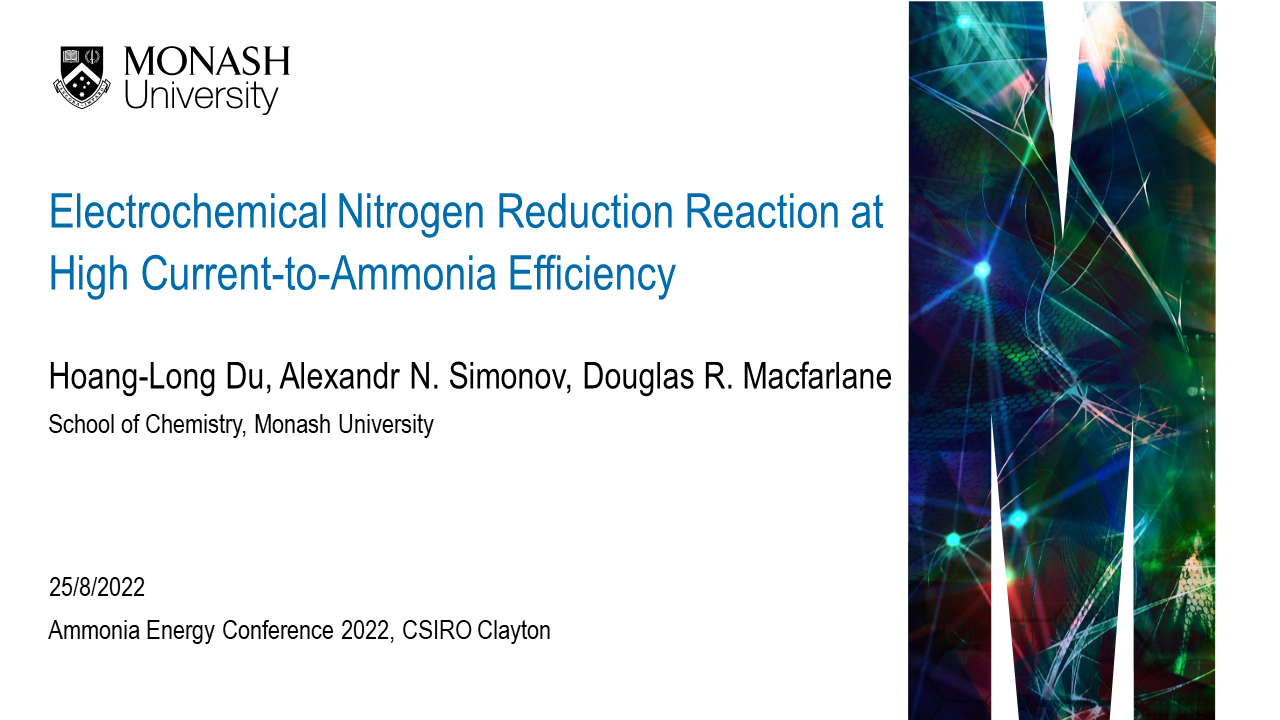Presentation
Nitrogen Reduction Reaction at High Current-to-Ammonia Efficiency
Apart from its use in the fertiliser and chemical industries, ammonia is currently attracting our community as a potential carbon-neutral fuel and as an energy carrier for worldwide transportation of renewable sources. To achieve this goal, replacements of the conventional hydrocarbon deposit-based technology for NH3 production require to be a green but inexpensive and scale-flexible technology, namely the only genuine electrochemical lithium-mediated nitrogen reduction reaction (Li-NRR). Reported by many research groups around the world, the process had so far been hampered by poor yield rates and efficiencies. At Monash University, we introduced a compact ionic assembly arranged in the electrode-electrolyte…

